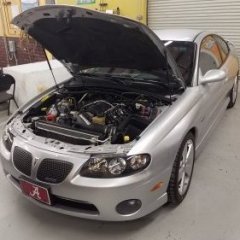-
Posts
52 -
Joined
-
Last visited
-
Days Won
12
Content Type
Profiles
Events
Forums
Gallery
Downloads
Community Map
Everything posted by Nate T.
-
Massimo is hit or miss according to the reviews. I think all those box store brands, minus American Landmaster, is a Chinese Hisun coming out of an assembly plant in Texas. QC seems to be spotty and based on whether or not the QC specialist had a rough night at the bar.
-
Thirdly, you can read the spark plug wire with the same multimeter. You're basically going to troubleshoot the system from the spark plug back up the system in order, once you verify for certain you have no spark.
-
Also, you can troubleshoot the coil with a simple multimeter. It will be right upstream of the spark plug. Read the primary side and the secondary side (spark plug side is the secondary). You will have a resistance value on each side. If either side reads open or infinite, the problem is a burned out coil.
-
Well that's not a real great way to diagnose a spark. There is an inexpensive tester that plugs inline and has a light. You should use one of those instead. That way the plug stays in the engine and has a chance to operate in normal conditions with respect to electrical ground and compression.
-
How did you confirm there is no spark? Did you hook up a spark test light?
-
Well that there might be enough to get you through 1 whole night
-
Also, the closer a ground wire connects to the frame from an electrical component the less "noise" is introduced to the circuit. Not that big a deal for basic systems but it matters a lot for sensitive electronics like audio and video systems. Additionally, its "safer" because electrical current runs from negative to positive, so the shorter the ground wire the shorter the current path through a skinny wire is.
-
Ok, well let us know how it works out. Keeping troubleshooting and results active in the forums really helps out other people whether or not they post on here.
-
Any black wire in a factory harness of a 12V system will be a chasis ground. It may have multiple points where it connects to the frame. This is done as 1. A redundancy and 2. To ground separate pieces of the chasis that are electrically separated by a urethane suspension bushing.
-
Woah now, of you put 12v on it and heard/felt a click, it might not be the injector. Was the fuel line pressurized? I'd suspect a fuel pump before I suspected an injector.
-
Well 10-4 good buddy
-
Also, you don't want dielectric grease on the metal contacts themselves. You want it around the seal of the plug, not on the contacts. The grease itself is an insulator.
-
I'm curious, how did you check the injector to verify it wasn't flowing? First thing I would do it stick an ohmmeter on it and look at the resistance across the injector. I would imagine somewhere between 5-50 ohms. Then I'd check voltage coming to it during start up to see the "pulses". If I've got voltage, but no squirt-squirt, bad injector. If the injector is pulsing but not squirting, its clogged. Either way, new injector.
-
Well, how did it turn out? Hopefully not a "lessons learned" story...
-
I suggest covering the hole with metal first. My son tried this with his little hoopty and it burned a hole through the tape right where the exhaust hole was.
-
Yeah, if it dissolves ethanol tarnish then it will do it
-
Mule. Last forever.
-

Mule 550 parking brake cable and rear end work
Nate T. replied to Travis's topic in Kawasaki UTV SxS Forum
Well it looks like this carb for a Kawasaki FE290 engine is really common and used in a lot of John Deer Gators, Club Car golf carts, and quite a few lawn mowers. There are a lot of versions with it and seem to revolve around exterior dimensions for the throttle stack height and choke orientation. But the bolt holes and throat dimensions seem to be the same and I bet they'd cross over from model to model fairly easy. -
Why not just use that exhaust tape/wrap? Cover the hole with a piece of sheet metal and use the wrap/tape to hold it in place
-
Couple things, if the new spark plug was a different heat range, it would affect the idle characteristics. Second, the idle air screw having trash or corrosion will do this. For those that don't understand carburetor fundamentals, the carb runs off the idle air screw from idle to about 2500 rpms. From about 2500 to 3500rpms, it's a combination of idle air and main jet fueling. After 3500 rpms it's all main jet fueling. So, hopefully that helps some folks narrow down their carburetor troubleshooting. For example, idles fine but boggs down at higher rpms, you have main jet issues (the big one that pokes up through the middle of the carb). Bad idle but runs with open throttle, idle air issues (usually a screw or smaller needle type, may be under a thin tin cap that you drill or pry out (EPA thing), up in the front of the carb).
-

Kawasaki Mule Parts. Information**updated**
Nate T. replied to Travis's topic in Kawasaki UTV SxS Forum
Partzilla has treated me well. Prices are always lower or equal to anything else I've found, and they even comped my last shipping fee because they had to order a part they didn't stock. -

Mule 550 parking brake cable and rear end work
Nate T. replied to Travis's topic in Kawasaki UTV SxS Forum
Yep, and, the OEM mounting bolts and the brake line flange nut are the right size/thread too. So I thought it was a pretty good find. I might have to try one of these $15 Amazon carburetors next just for fun. -

Mule 550 parking brake cable and rear end work
Nate T. replied to Travis's topic in Kawasaki UTV SxS Forum
-

Mule 550 parking brake cable and rear end work
Nate T. replied to Travis's topic in Kawasaki UTV SxS Forum
So the OEM drum brake cylinder is stupid expensive, but I just test fitted a Dorman made for Suzuki ATVs, and it's almost a perfect fit. The 2 mounting bolt holes are just a little off, but nothing that can't be handled by oblonging the holes in the drum back plate. And for <$11, it's worth it. Dorman W37850 Drum Brake Wheel Cylinder https://www.amazon.com/dp/B001PYV1I0/ref=cm_sw_r_cp_apa_i_TL5UDbWR61Q68 -

Mule 550 parking brake cable and rear end work
Nate T. replied to Travis's topic in Kawasaki UTV SxS Forum
I'll look into that, thanks








